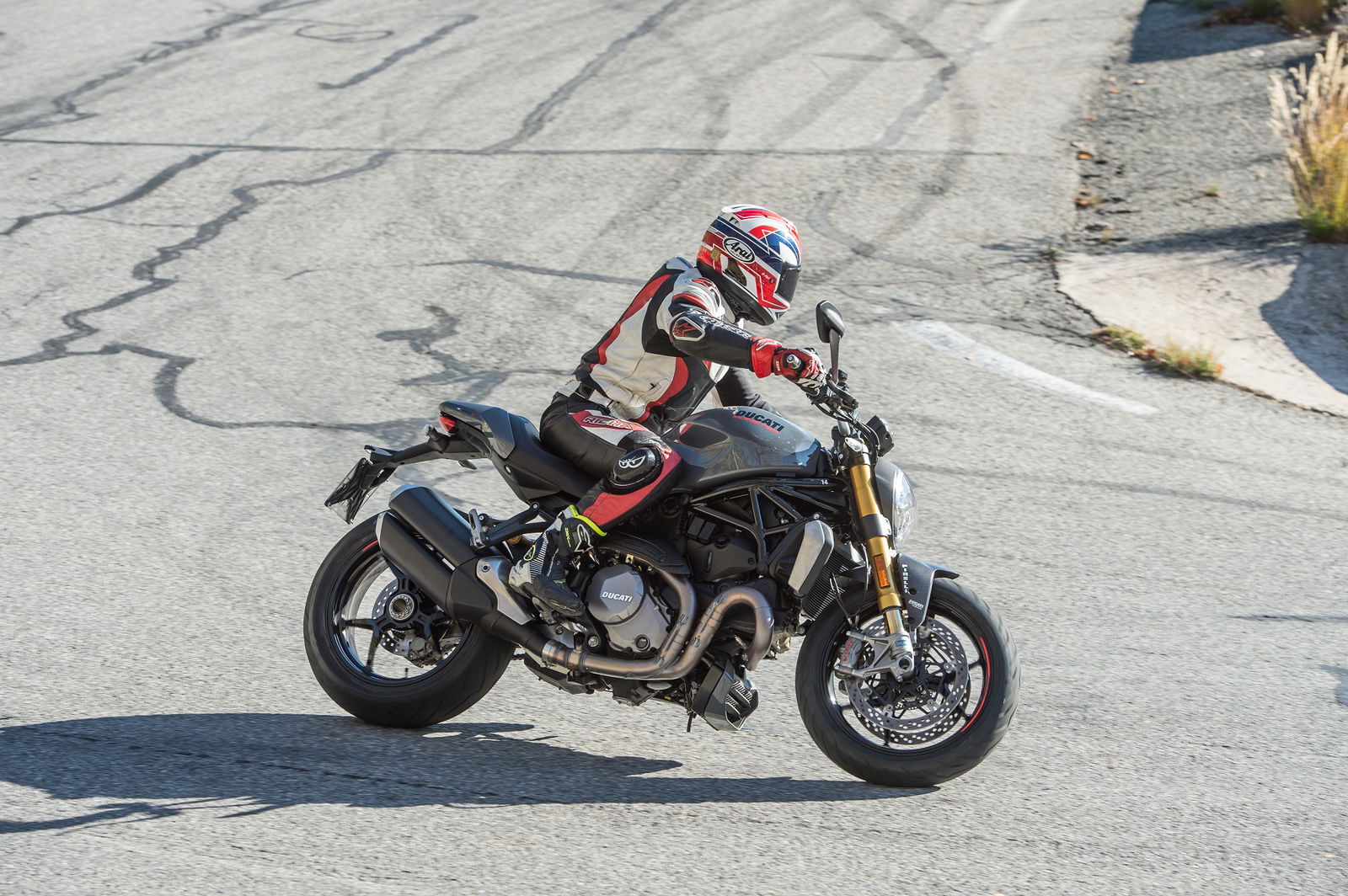First ride: 2017 Yamaha MT-09 review
Equipment upgrades make Yamaha’s superb budget-priced triple better than ever
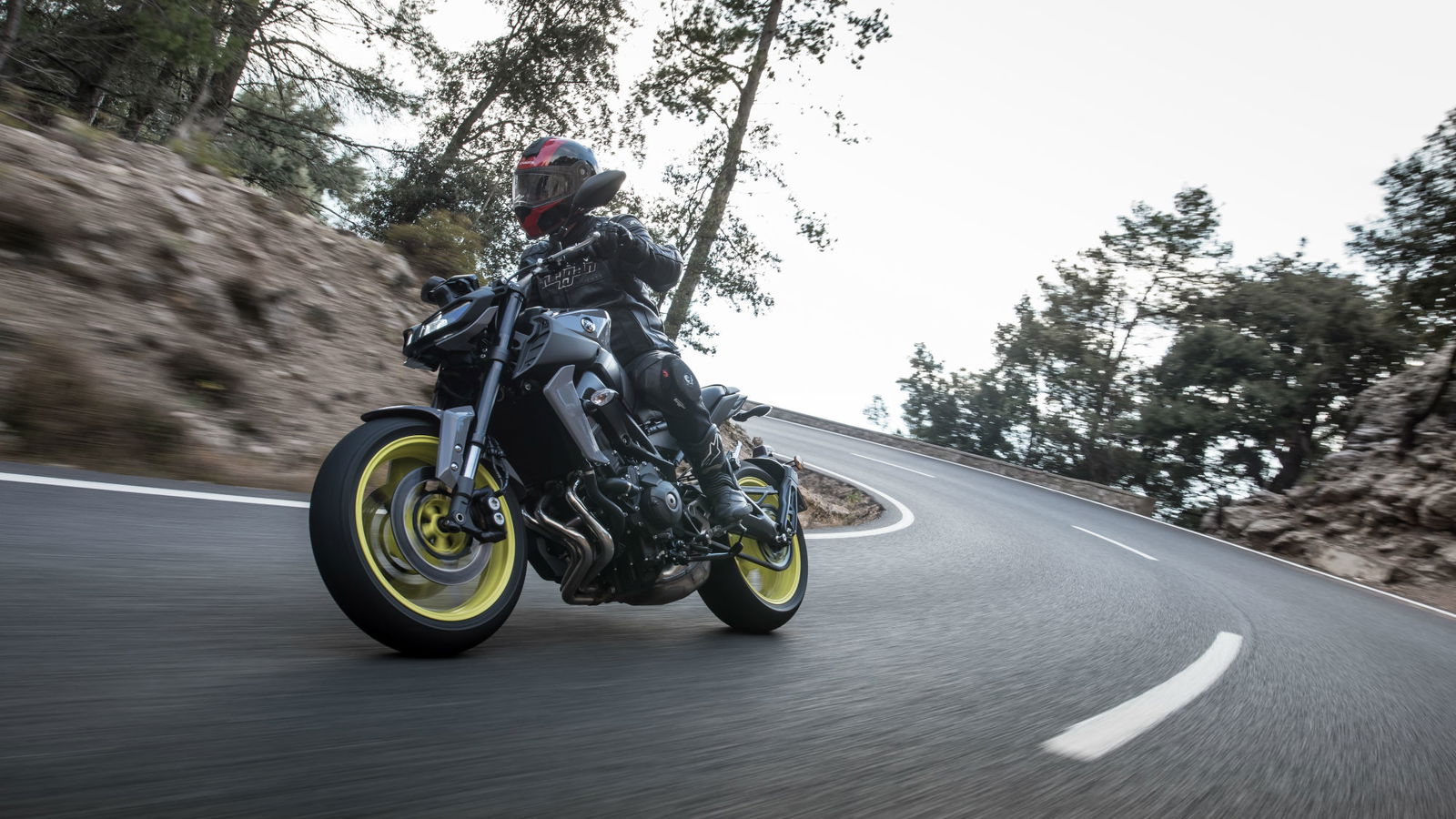
A YEAR since the last version was launched, Yamaha’s MT-09 is back again with more updates.
We’re not complaining. It might be the best sub-£8,000 bike you can get. And the refresh means we get to ride it again, in Majorca.
This time it’s had a proper restyling, its first since the original version of 2013. It’s now got two headlamps instead of one, each with two LEDs, making it look more like it’s big brother, the MT-10.
It’s got a reshaped tail unit, a 12-LED back light and a single-sided number plate holder mounted on the swing-arm.
There are new radiator cowls and it's got larger air scoops on either side of the tank (note the use of the word ‘scoops’ rather than inlets, since they have no induction function).
The engine complies with latest Euro4 emission limits and still makes 115hp and 64.5lbft.
The aluminium frame is unchanged but the ergonomics have been altered slightly, making the seat 5mm higher (leaving it still low enough for a 5’9” rider to easily get both feet flat on the ground).
So it's not exactly had a complete top-to-bottom overhaul, but there have been significant suspension and equipment upgrades. Three in fact: it's now got separate damping control in the forks, with a rebound adjuster on the right leg and a new compression adjuster on the left, plus adjustable pre-load; it's gained a quick-shifter for up-shifts; and it's got an assist and slipper clutch.
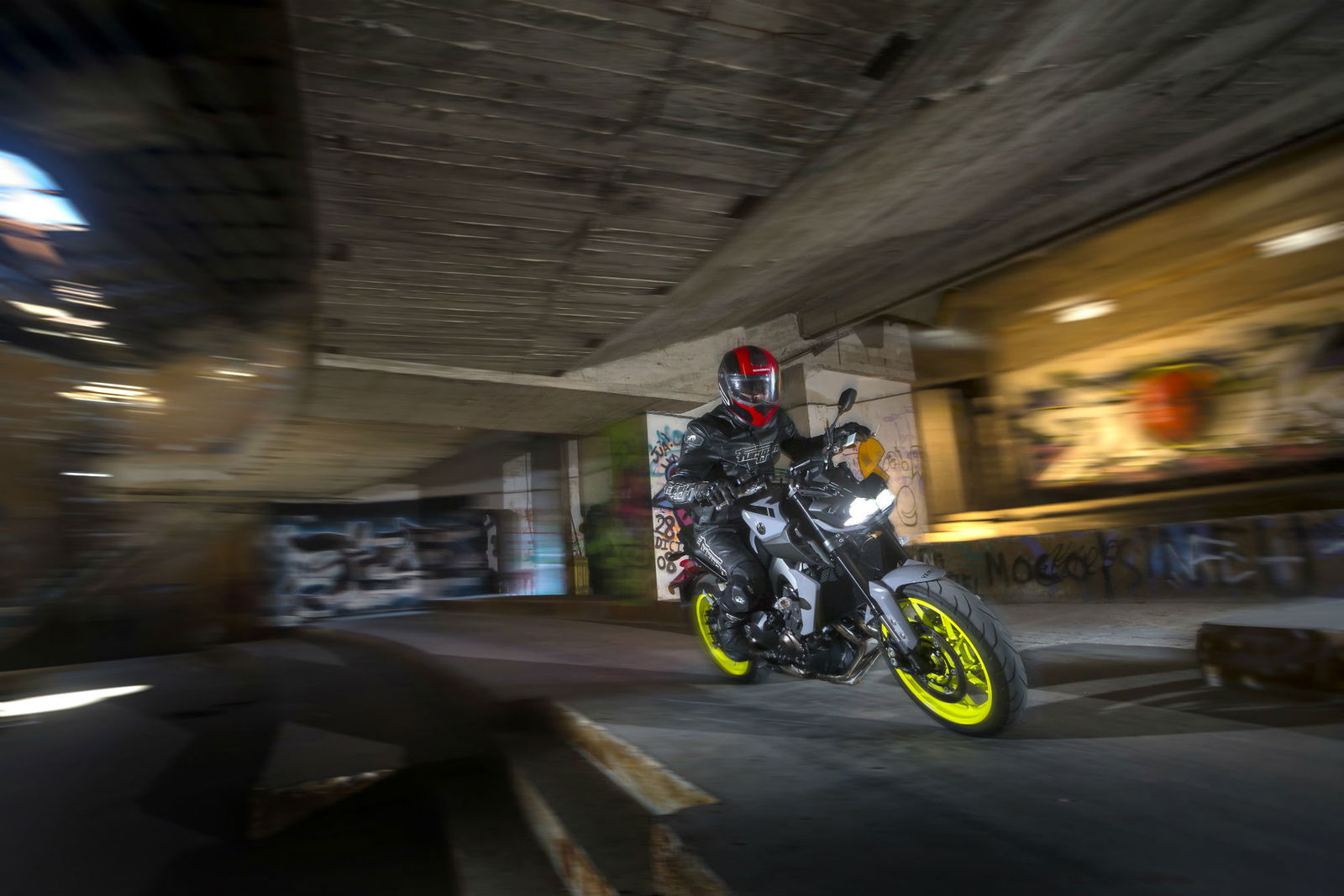
That's in addition to the rider aids it already had: two-level traction control, power modes and ABS.
As a triple, the MT-09's got a good spread of torque, a compromise between the mid-range of a twin and the top-end of a four-in-line. Why would you want to interrupt all that useable drive with conventional gear changes?
The addition of the quick-shifter means you now barely have to. It brings out the best in the engine's character, and the engine's character brings out the best in the quick-shifter, which is derived from the R1's.
Let the revs climb to near the 11,300rpm redline, knock it up a gear with the throttle open and the power barely drops off, giving seamless acceleration all the way, punctuated by the odd bar wobble as the front wheel skips off the ground.
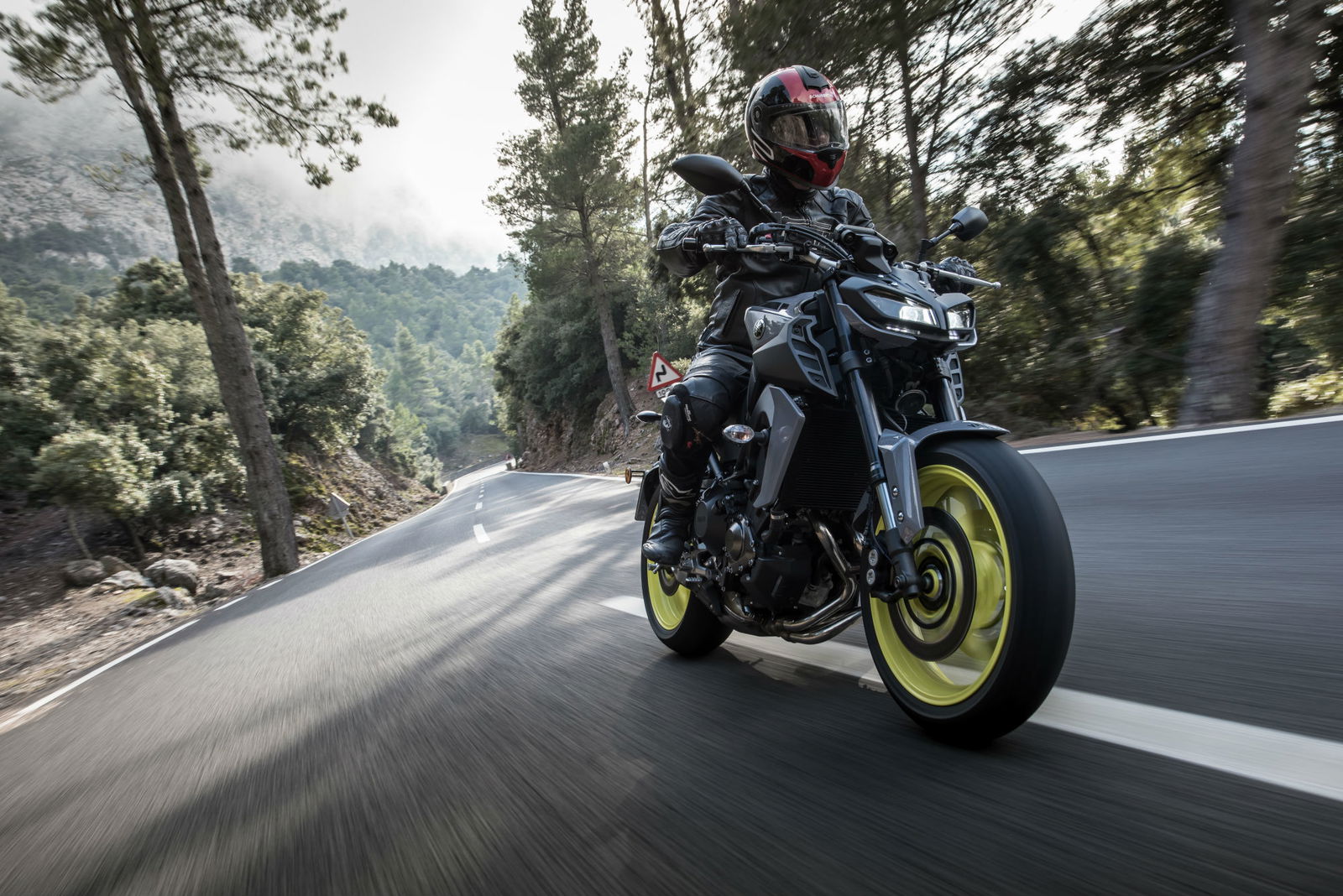
Shift up sooner and you'll still be given constant acceleration, although the higher the revs the smoother the changes.
It's a real enhancement of the 847cc three-in-line and brought a new dimension to the pleasure of corner-to-corner acceleration on winding roads in Majorca.
Part of the pleasure is the sound, with each shift bringing hardly a drop in revs.
With torque comes back-torque on aggressive downshifts, locking the rear when you suddenly release the clutch - unless it's a slipper clutch.
The MT-09’s tidied up my clumsiest downward shifts, as if I’d eased out the clutch and applied a perfect amount of throttle. It lent a smoothness to my riding which might even have led any casual observer to think I knew what I was doing.
The ‘assist’ part makes the lever 20% easier to pull according to Yamaha and it did feel light on the wrist all through the day.
Only once, on a slippery road, did the rear momentarily lock and slide after I changed down.

And was it a slippery road. On a mountain descent, one road was wet and also coated in places with a worrying green surface, probably moss or algae. As one rider observed: “Of all road conditions, one of the least favourable is green.”
We passed a car that appeared to have slid off the road into a ditch, the occupants out and making slow-down gestures at us.
My rear tyre kept sliding out of corners, despite a cautious throttle hand, ginger lean angle and the bike’s traction control (in level one, offering minimal intervention – I probably should have been in level two).
And at one point, braking for a corner, not particularly hard, the front locked up in a straight line, causing me to shout obscenities.
Unfortunately you can’t quite see what happens in my onboard video of the moment, as the bars are just out of frame, but they go sideways for an instant as the front slides. It felt like the ABS failed to intervene.
I wonder if a very slippery surface can stop the front so suddenly that the ABS can’t keep up. At other times I did distinctly feel a pulse through the lever as the ABS activated, but not on this occasion.
From their power, you'd probably never guess the brakes are those of a budget-priced machine. The four-pot front calipers deliver in abundance.
The suspension also belies the price. The forks on their standard settings are the same as before according to Yamaha, but of course you have that new compression damping adjuster. The settings were stiffened-up slightly for our morning ride, with four extra compression steps at the front and a rotation of rebound and one step of pre-load at the back. This was because the standard settings are for someone of 11st.9lb and 5’7” according to Yamaha, which most of us exceed (leaving me wondering why they don’t change them).
Both ends coped well with the twisty roads, hard braking and acceleration, and provided all-day comfort. After lunch we reverted to standard settings and the forks became slightly softer, more ready to dive on braking.
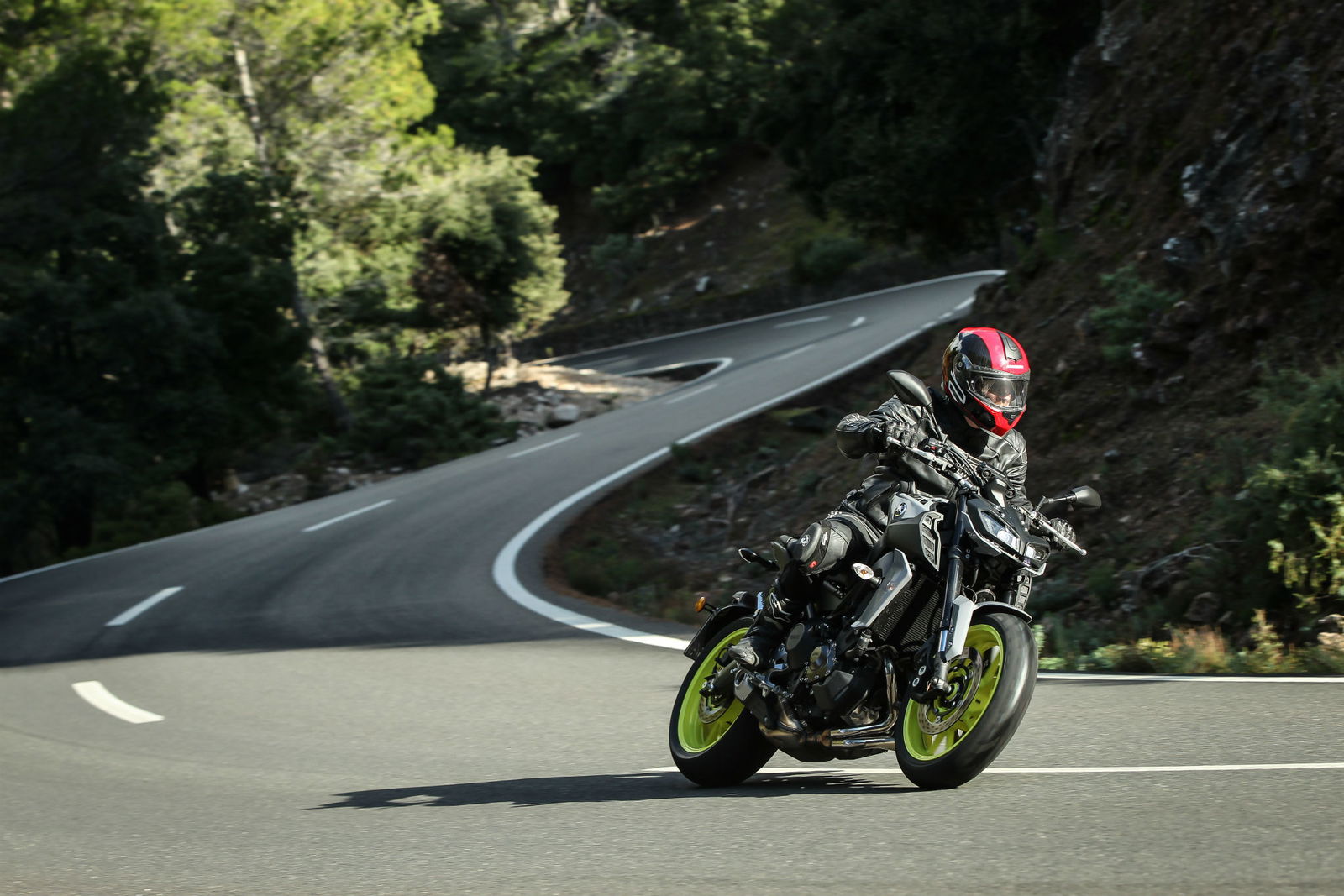
The shock felt a tiny bit bouncy at times but you may well be able to adjust that out with more rebound damping, according to your preference.
The bike itself feels narrow, lightweight and quick to change direction, the leverage of the wide bars amplifying the pressure applied by your hands.
The tank sits on top of the aluminium frame beams which enclose the engine, allowing it be narrower at the point where your knees grip. Despite its extra cylinder, the MT-09 barely seems any bigger than the MT-07.
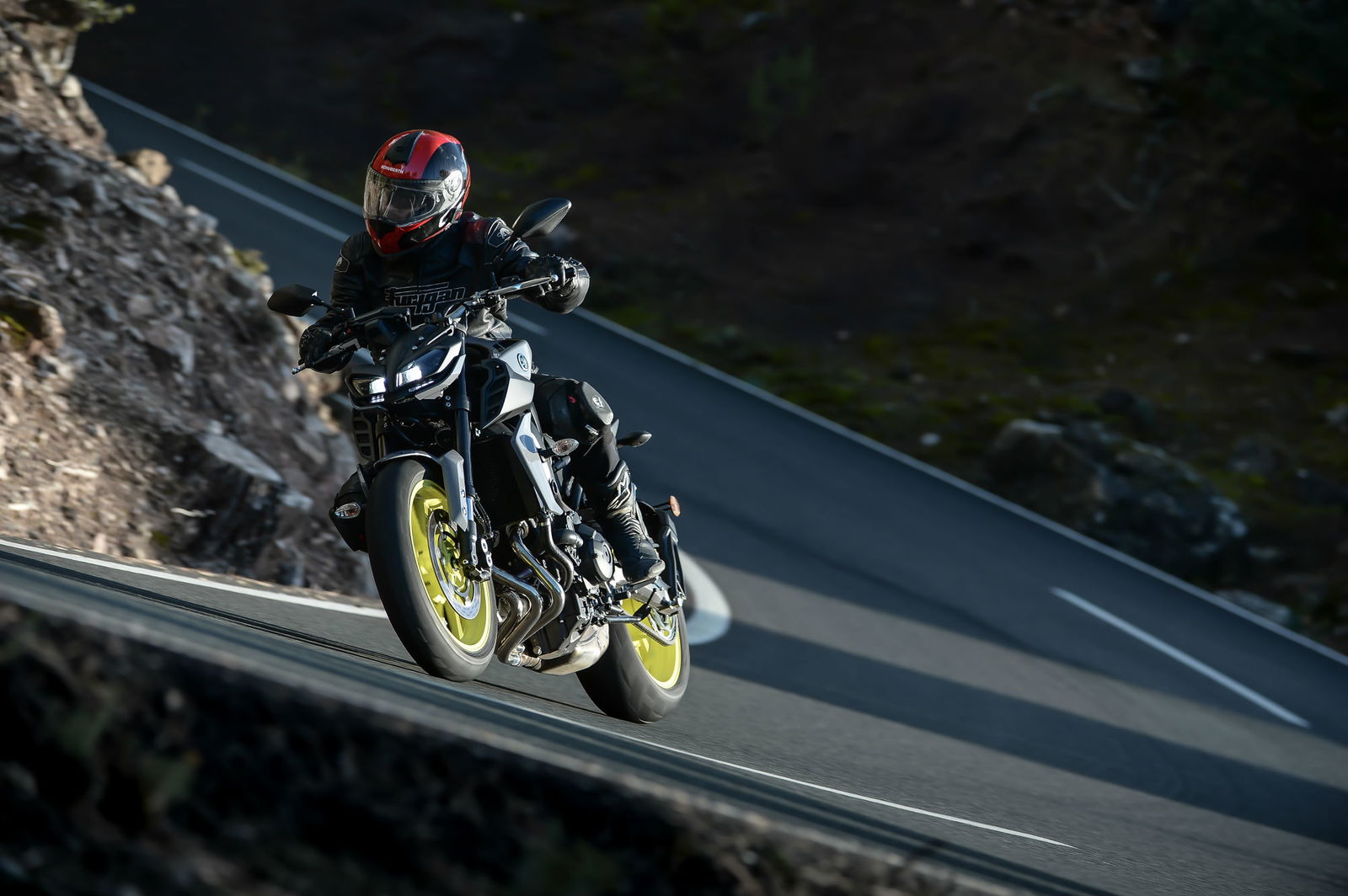
The riding modes and traction control are as before, with one exception. Now, when you switch the ignition off and on, it remembers the levels you’d selected instead of reverting to the most nannying settings. That’s unless you’ve switched the traction control off altogether, in which case it still deliberately forgets your choice and gives you level one.
There are three modes offering a progressively more aggressive throttle response, and you don’t need an instruction manual or tutorial to work out how to switch between them. You just press a button and close the throttle, and your new selection appears on the diamond-shaped digital dash.
The initial response on opening the throttle feels a bit snatchy in an urban environment. In the softest mode it's smoother but then the torque response feels sluggish if you’ve just switched down from one of the other two modes. You can’t have everything.
But you can have a very good, all-round competent bike at a very good price.
My only other slight grievance with the MT-09 is that I couldn’t properly see the numbers on the rev counter as I rode. They’re at the very top of the display, and get partly obscured by the black border. I’ve attempted to show this with a photo from the rider’s viewpoint but they get a bit more obscured in practice than the resulting image, below, suggests.
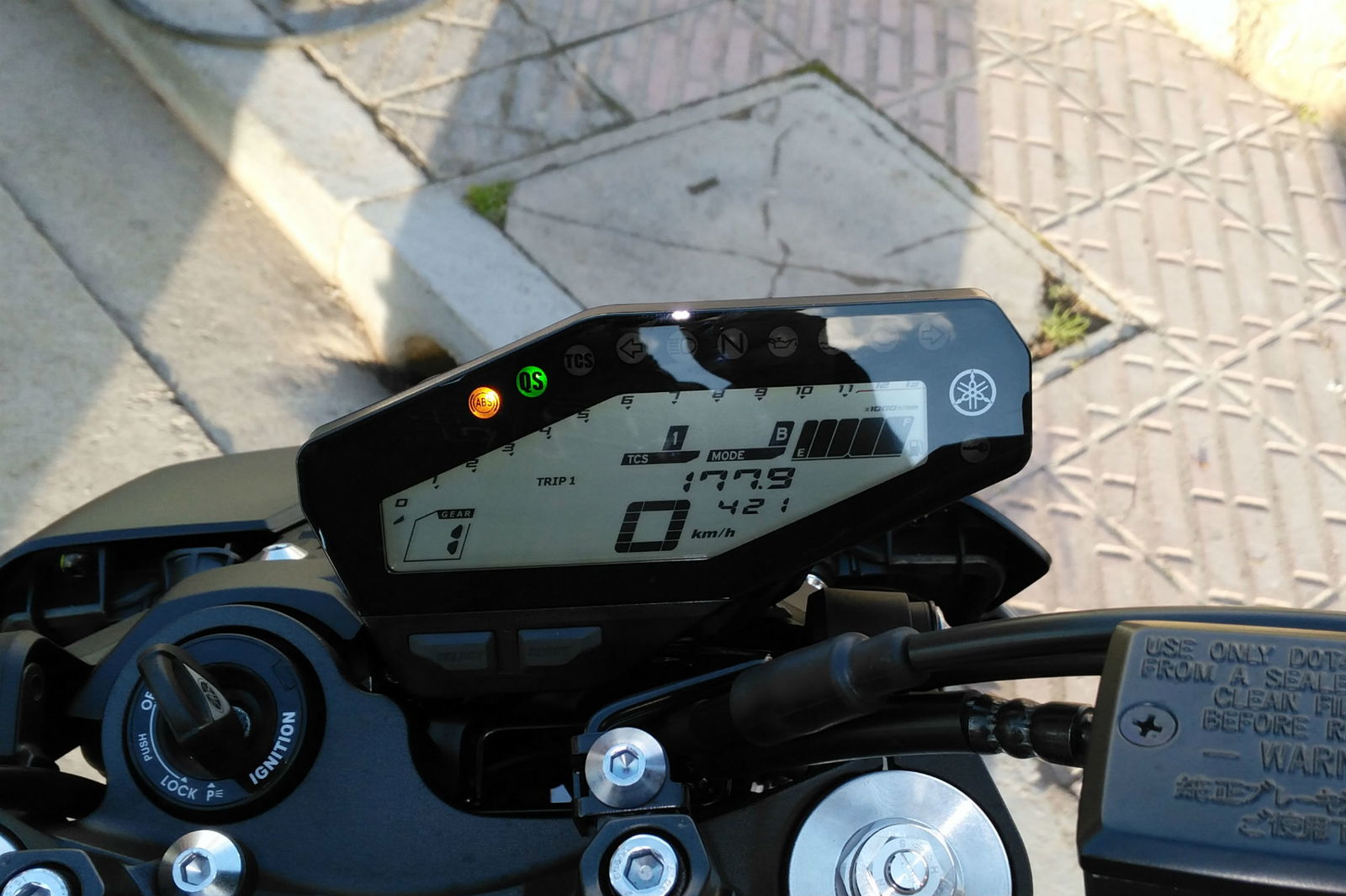
Yamaha said the new lights had allowed the clocks to be repositioned, fixing this niggle, but they’re still angled too low.
It’s not a big deal. The MT-09 is one of those machines that I can honestly say I would buy myself if I was looking for the best naked bike available for seven or eight grand, or maybe just the best bike at that price.
It was good value at its 2016 price of £7,349. At the 2017 price of £7,799, I still think there is probably nothing else that offers quite as much for the money.
Here are some onboard thoughts from the launch ride:
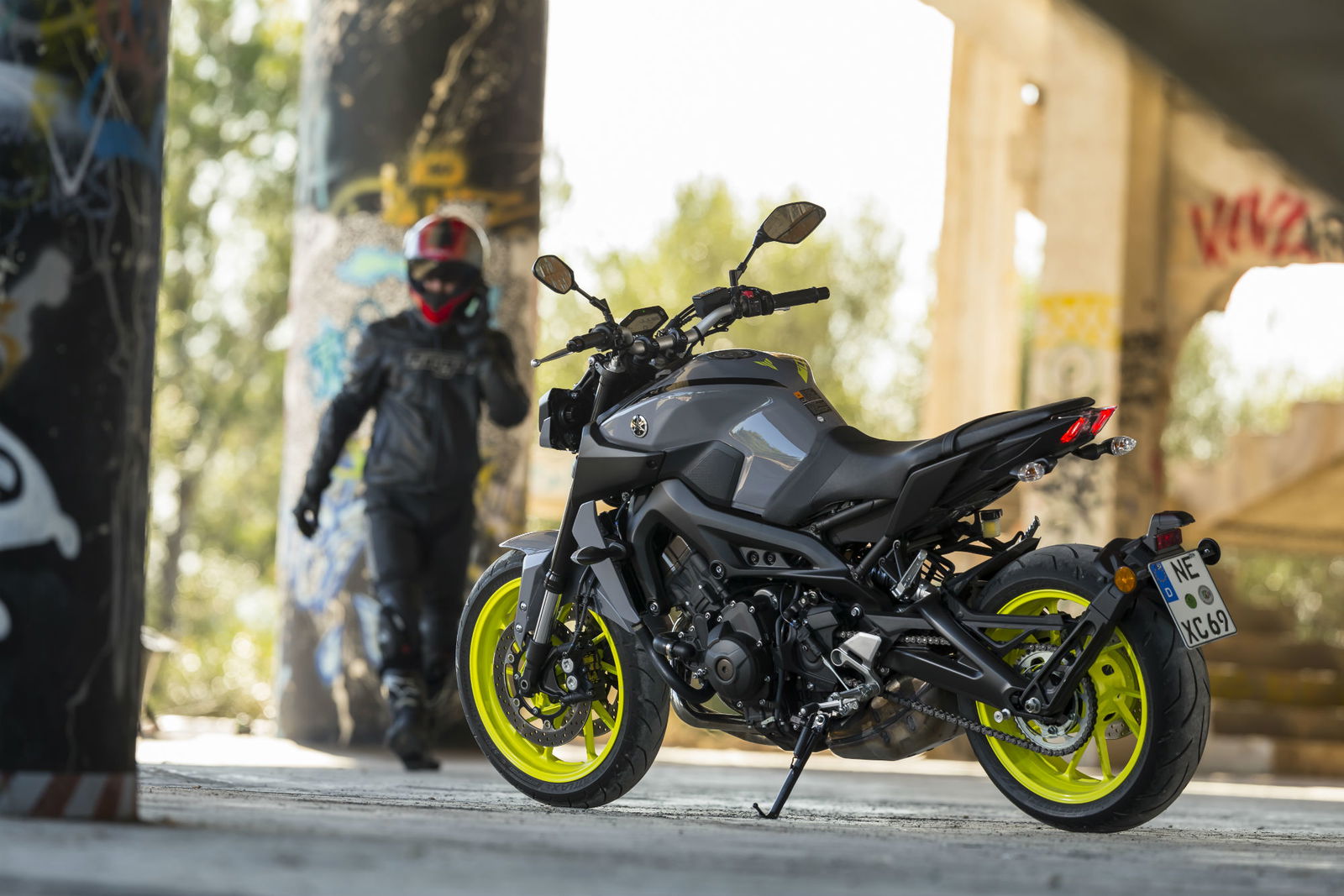
Model tested: Yamaha MT-09
Price: £7,799
Engine: 847cc three-cylinder DOHC four-valve
Power: 115hp @10,000rpm
Torque: 64.5lbft @ 8,500rpm
Wet weight with full tank: 193kg
Frame: Diamond-type aluminium
Suspension: Upside down fork with separate damping controls, rebound on the right and compression on the left. Also adjustable for pre-load. Shock adjustable for preload and rebound damping.
Brakes: Radial four-pot calipers on 298mm twin floating front discs; single-pot caliper on 245mm rear disc. ABS.
Tyres: Bridgestone Hypersport S20s, 120/70x17 rear, 180/55x17 front, tubeless
Seat height: 820mm
Fuel capacity: 14 litres
Colours: Grey/yellow (‘Night Fluo’), silver/blue (‘Race Blu’), black (‘Tech Black’)
Availability: January 2017
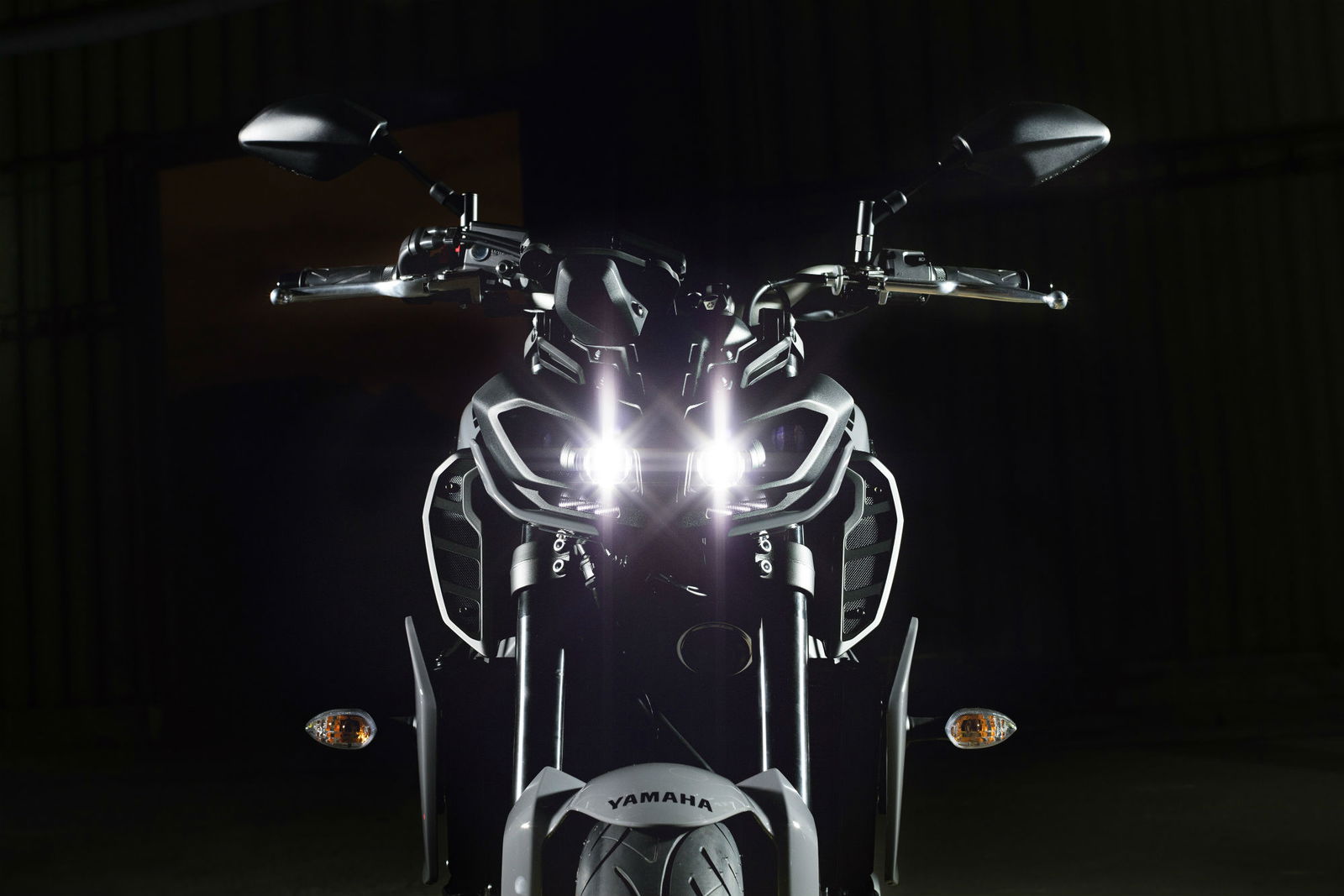
New headlights
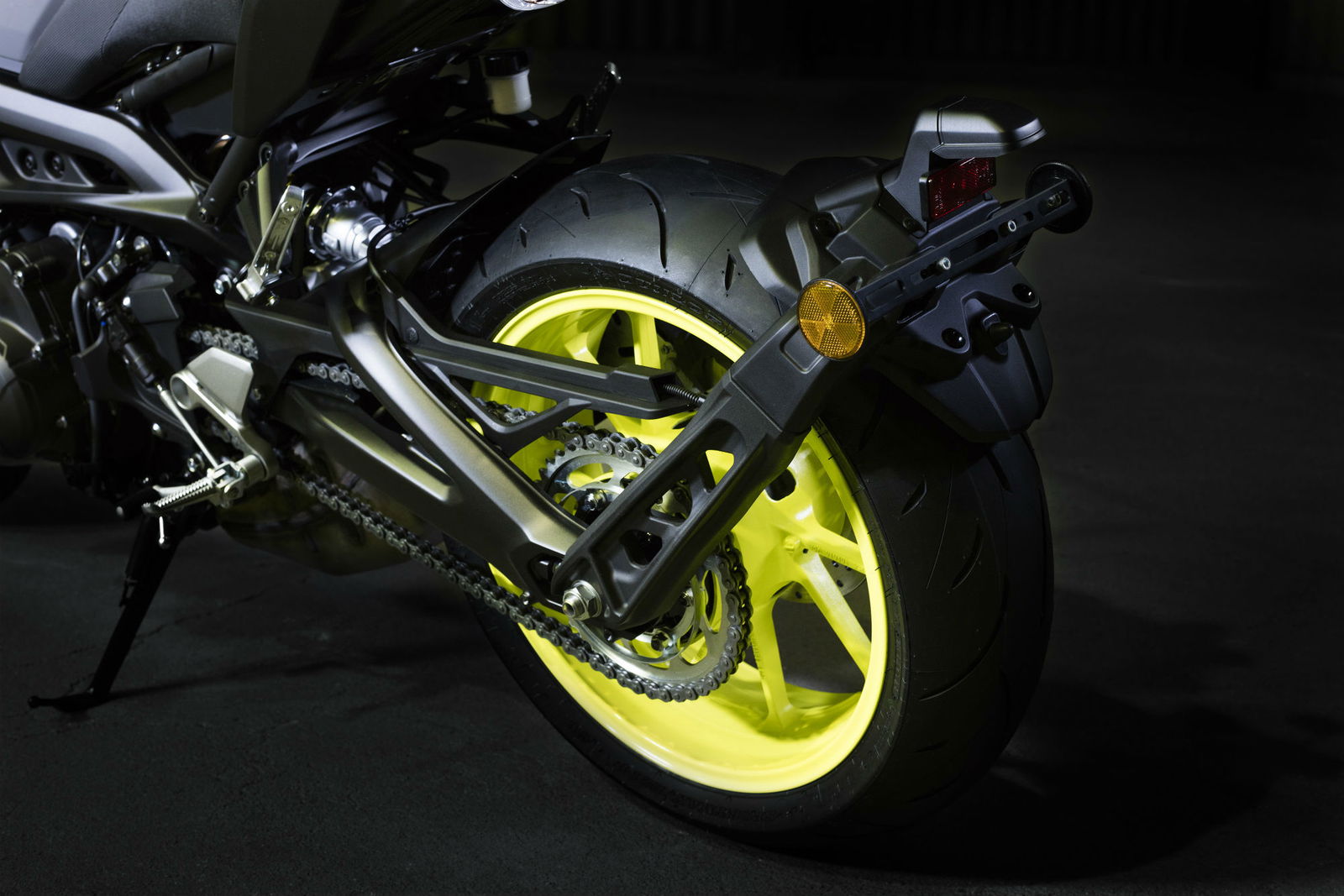
And number-plate hanger
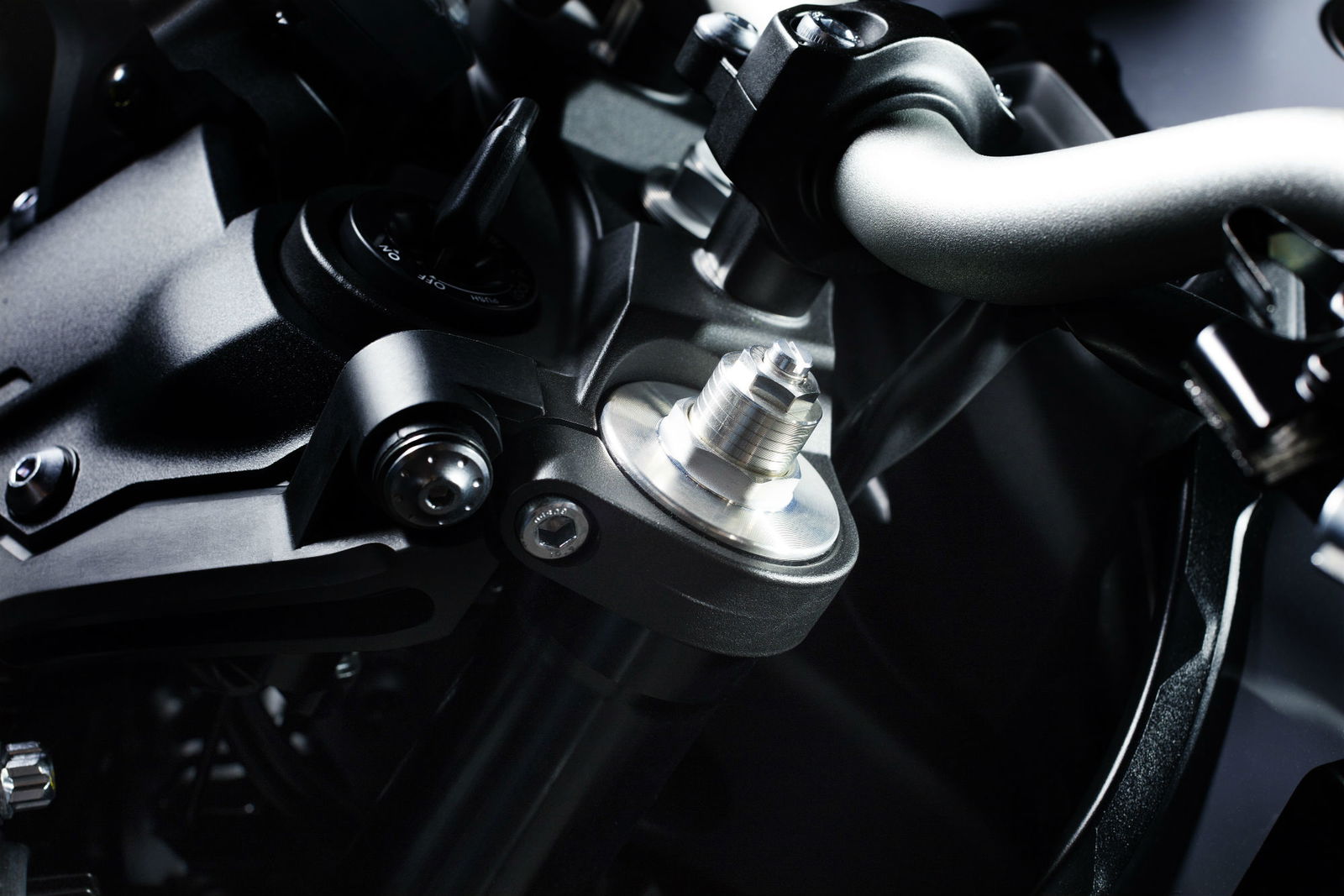
It's got a new compression damping adjuster on the left fork.
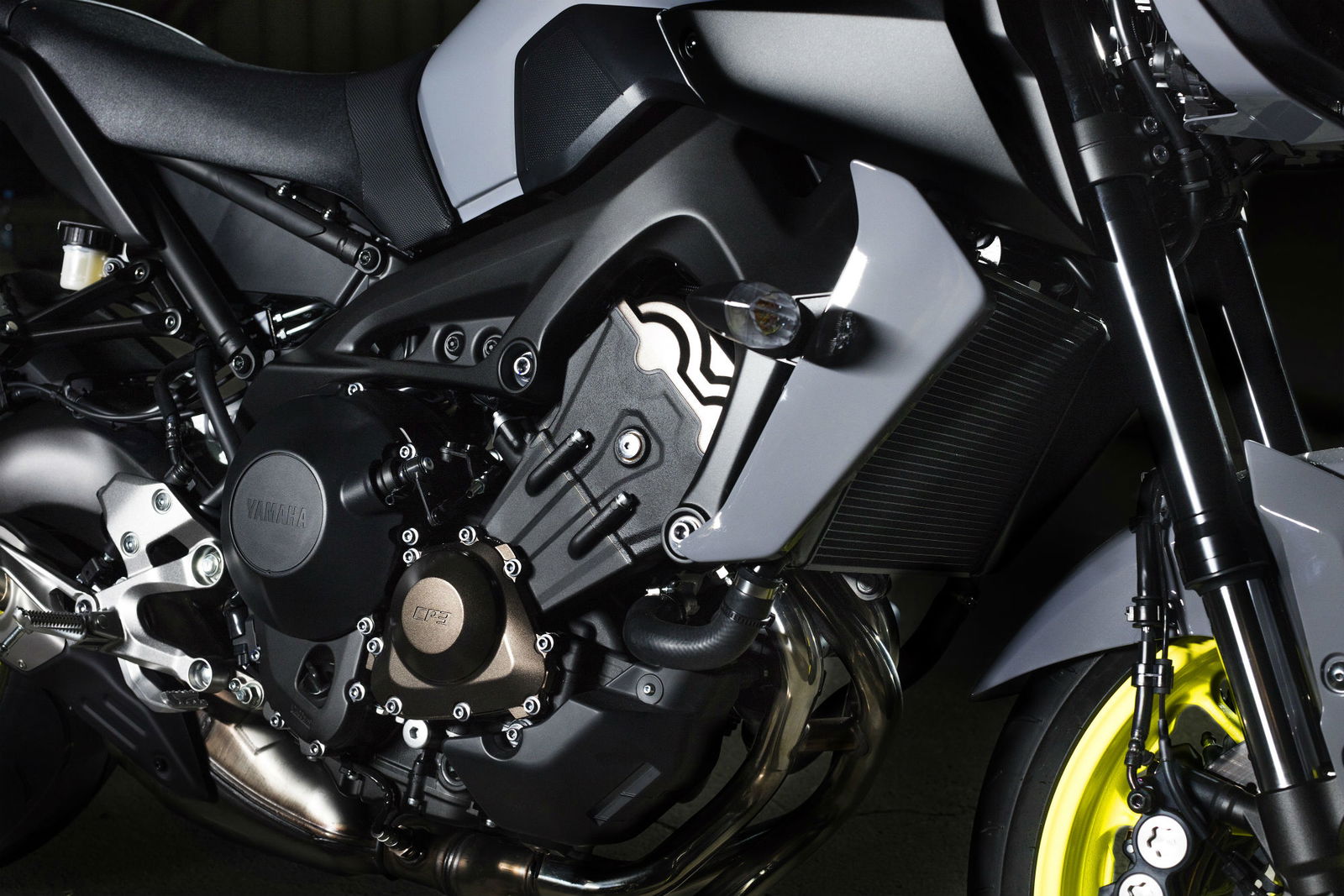
And new radiator cowls.
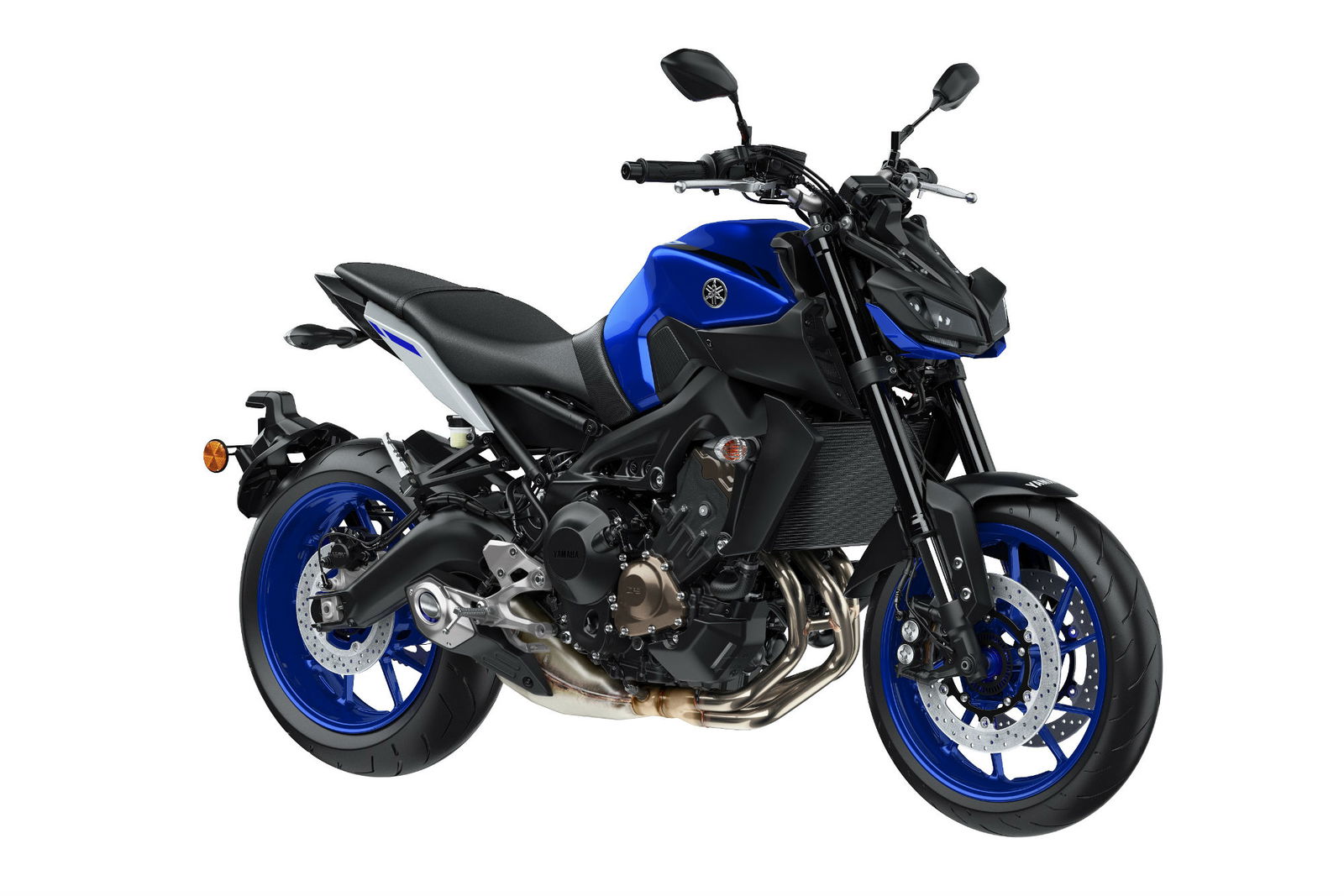
In blue
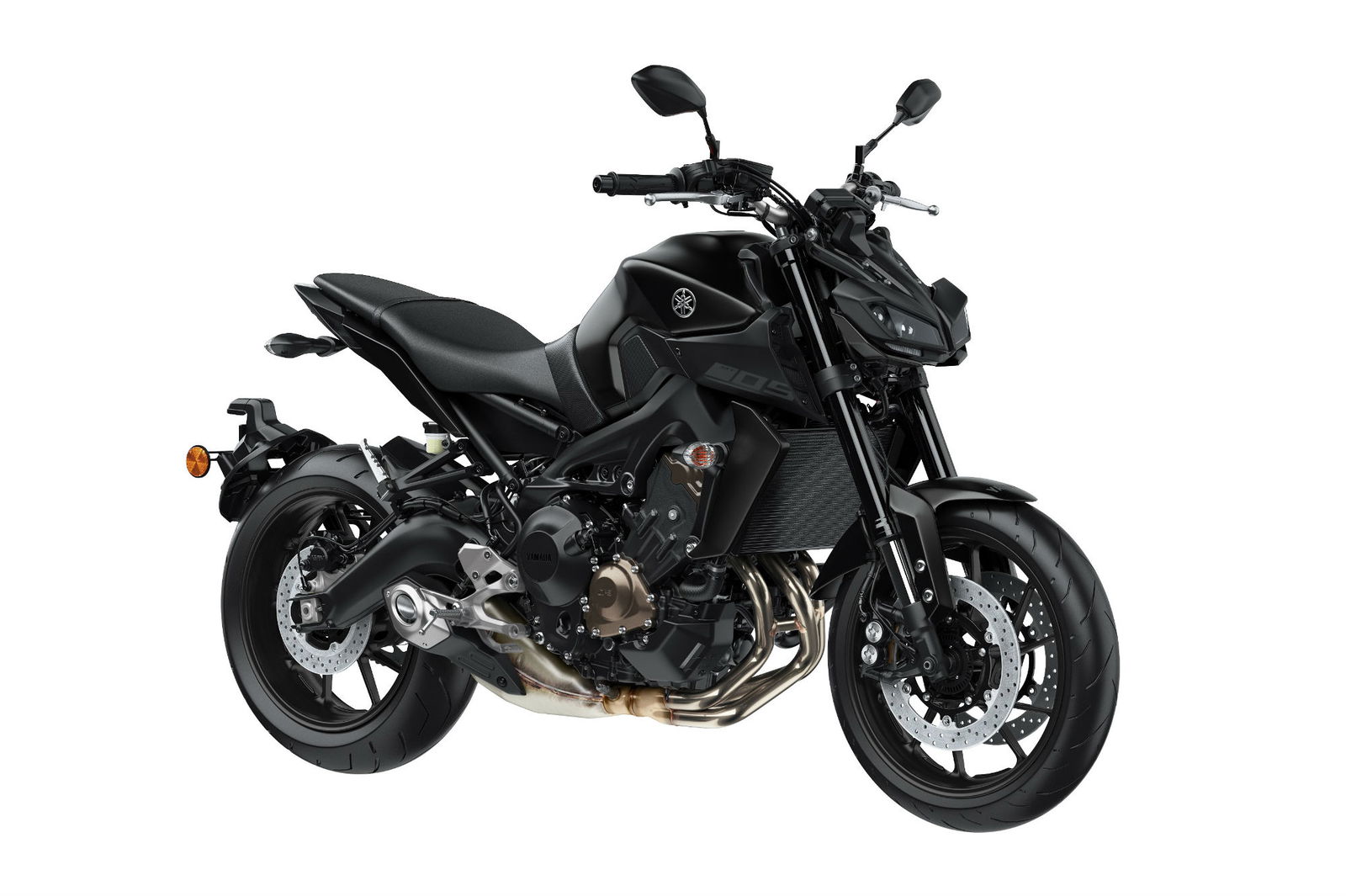
And black
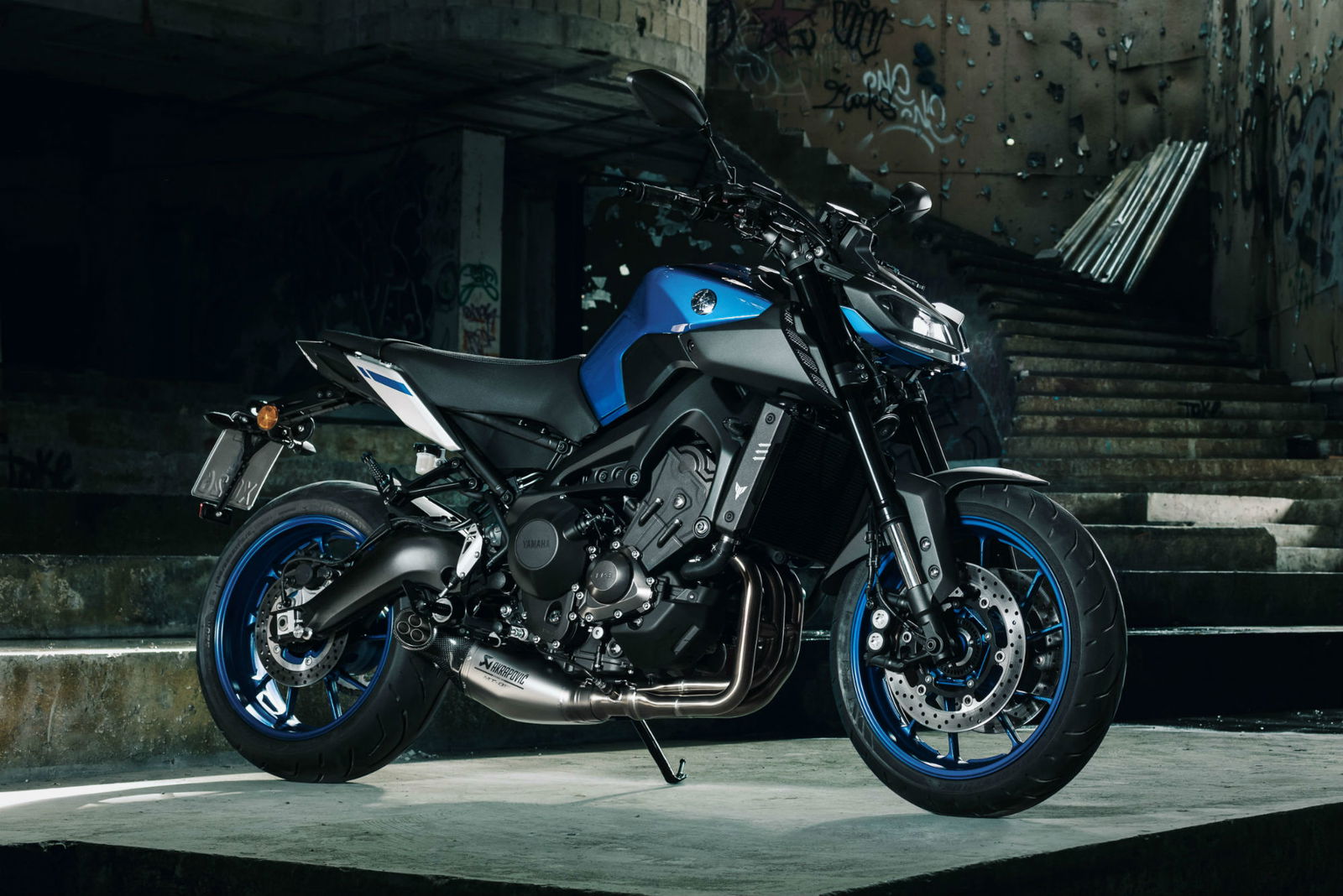
Sports accessories include an Akrapovič exhaust, fly screen, flatter seat, radiator cover, conventional number-plate holder and adjustable rear-sets.
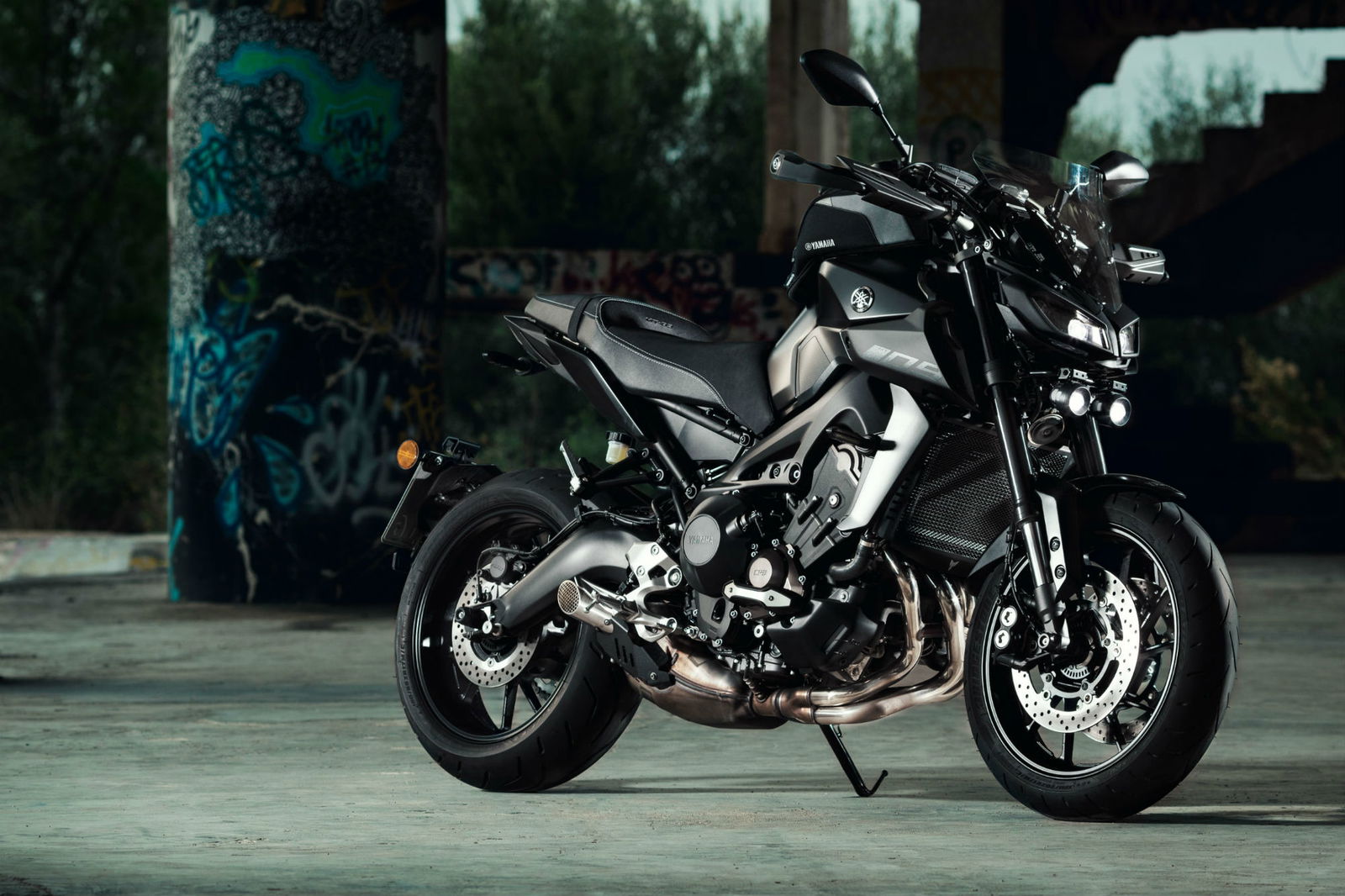
While touring accessories include a higher screen, comfort seat, fog lights, hand-guards and engine protectors.
